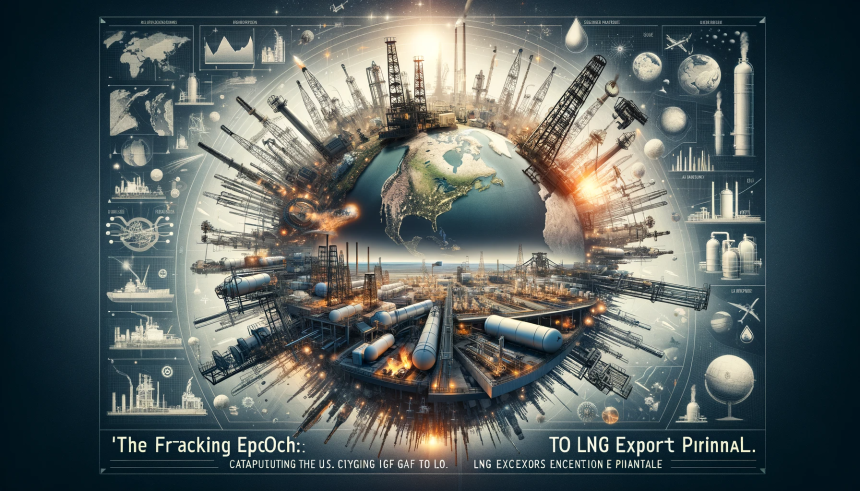The United States has risen to the top of the global energy chessboard as the leading exporter of liquefied natural gas (LNG), causing a major shift in the game. The technological behemoth known as hydraulic fracturing, or fracking, is largely responsible for this tectonic upheaval. Let’s take a tour through the complex maze that explains how fracking turned the United States into an LNG powerhouse.
Fracking: Revealing Underground Giants
Fracking has been nothing short of revolutionary—it involves breaking up the Earth’s bedrock to release natural gas and oil from shale formations. Huge shale gas reserves that were previously thought to be inaccessible have been released by applying high pressure to fluids inside the earth’s crust. The story of energy in the United States has changed because of this discovery, moving from one of shortage to plenty.
A Tectonic Transformation in Energy Dynamics
The tale of American energy before fracking was one of reliance, with its tentacles extending across seas to provide nourishment. However, the fracking boom completely changed this storyline. It transformed the United States from an energy-dependent country to a net natural gas exporter by unleashing the massive shale gas deposits, which sent domestic natural gas output to stratospheric heights.
The Tale of LNG Exports
The wealth of fracking not only met local needs but also gave rise to a massive LNG export industry. LNG, or natural gas that has been cooled to a liquid state for easier transportation, served as the delivery system for this excess. The United States initiated a vast infrastructure project, building liquefaction facilities and terminals, paving the way for an unparalleled increase in LNG exports.
This newfound energy might sent shockwaves over the world, providing alternative energy lifelines to countries, reducing their need for traditional energy giants, and quietly shifting geopolitical boundaries.
The Paradox of the Environment
However, there are also dark aspects to this story. Despite its enormous economic benefits, fracking has been embroiled in environmental controversy. Fracking has been under intense regulatory and environmental scrutiny, with worries ranging from methane emissions and seismic disturbances to allegations of groundwater contamination.
The Forecast: Environment and Energy Working Together
In the future, the United States faces a dilemma as its dominance in LNG exports is contrasted with a shifting global energy paradigm that favors renewable energy sources. Thus, the story of fracking is at a turning point: can it balance its economic might with the urgent need for environmental stewardship?
Conclusion
Without a doubt, fracking played a key role in the United States’ transformation into a worldwide LNG export powerhouse, changing not just its own energy future but also the political and energy landscapes of other countries. The United States, riding high on its LNG exports fueled by fracking, is trying to balance this legacy with environmentally friendly and sustainable energy policies while the rest of the globe struggles to navigate the dangerous seas of energy security and climate change. Therefore, the fracking era is a monument to human creativity, with its future story intertwined with themes of environmental responsibility, economic aspiration, and the unrelenting pursuit of energy development.







